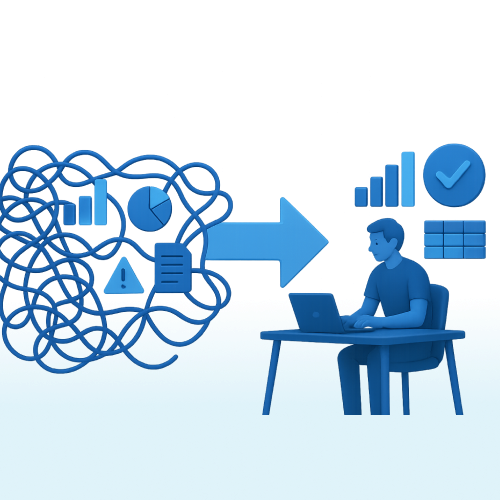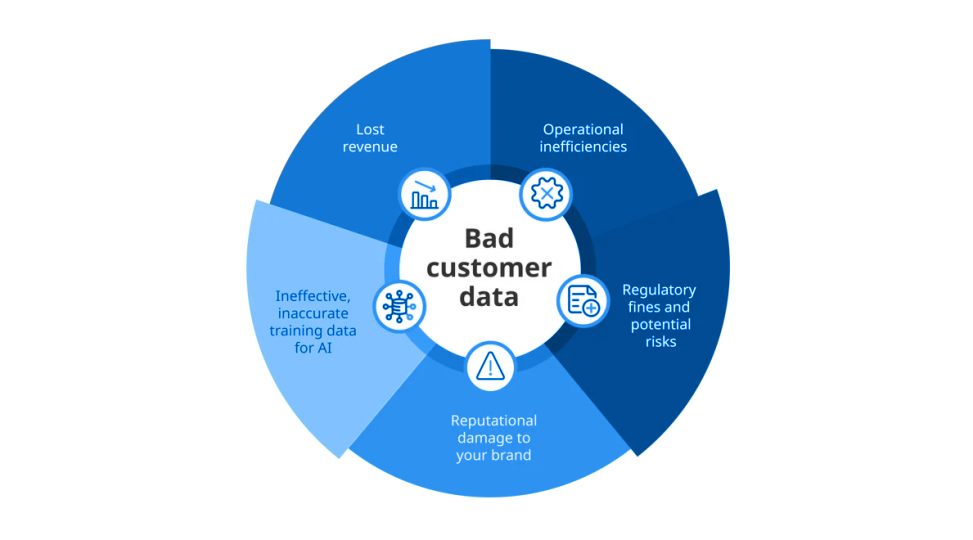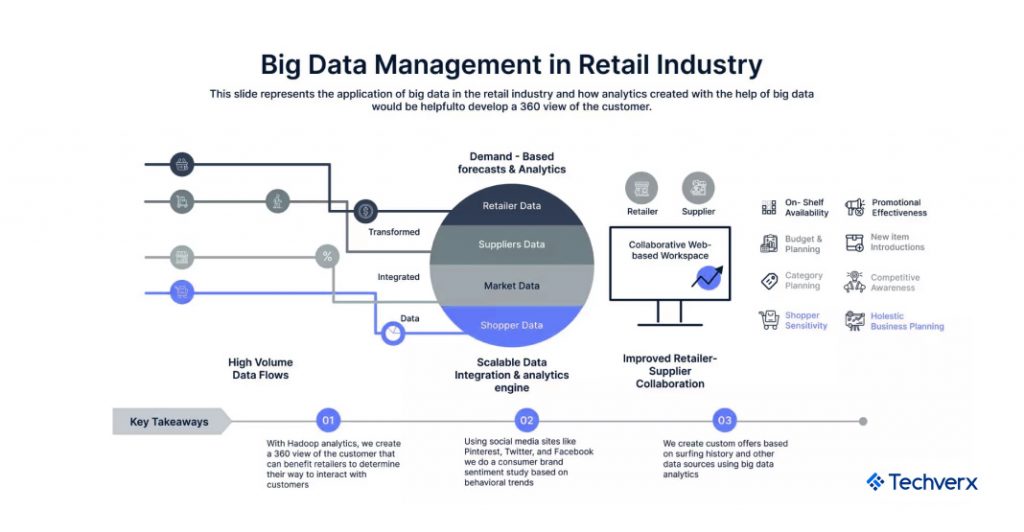
From Data Chaos to Decision-Making: Why Enterprises Can’t Delay Data Engineering

In modern retail, data is both a tremendous opportunity and a pressing challenge. While businesses recognize its value, they often struggle with the complexity of integrating information from numerous, fragmented sources. Supply chains, customer touchpoints, marketing platforms, and back-office systems each produce data in different formats, at different speeds, and on disconnected platforms. This disjointed reality prevents retailers from harnessing insights, optimizing their operations, and delivering the seamless customer experiences today’s shoppers expect.
To overcome this, retailers must adopt flexible, scalable integration strategies that can unify diverse data sources without disrupting their existing operations. A cookie-cutter model won’t suffice, successful companies are embracing modular, adaptable architectures designed to evolve alongside emerging technologies, customer engagement channels, and shifting business priorities.

Confronting Data Source Chaos in Retail
In luxury retail and e-commerce, the problem extends beyond the size or speed of data flows. Companies like Amazon or Walmart may wrestle with massive transaction volumes, but for most retailers, the greater difficulty lies in data variety, the sheer diversity of sources feeding into their systems.
Data pours in from supply chains, inbound and outbound logistics, e-commerce platforms, customer interactions, and third-party tools. Each of these systems generates data differently, some structured, some unstructured, across incompatible environments. This fragmentation, often referred to as “data source chaos,” makes harmonization and analysis an uphill battle.
The heart of the challenge lies in weaving together numerous applications and microservices so they work in concert and provide a unified view of performance and customer behavior. Companies relying heavily on internally built software often face interoperability hurdles, requiring intensive effort to enable cross-platform connectivity.
For retailers, the solution lies in adopting integration strategies that are both flexible and scalable. These approaches must be able to accommodate new technologies, emerging tools, and novel engagement channels. By addressing fragmentation directly, businesses can leave chaos behind and unlock insights that improve decision-making, streamline operations, and enhance customer experiences.

Build vs. Buy: The Balancing Act in Data Strategy
The build-versus-buy discussion is a recurring theme in data strategy. Leaders and stakeholders must carefully weigh factors such as total cost of ownership (TCO), scalability, integration challenges, and long-term sustainability.
Building in-house gives companies tailored capabilities, but demands investments in engineering teams, tools, ongoing maintenance, and retained knowledge to keep systems functional. Purchasing a solution, on the other hand, typically enables faster deployment with vendor support.
Yet with AI and other technologies advancing rapidly, the emphasis has shifted toward time to value. In a fast-changing environment, executives often need solutions they can implement immediately, even if a custom-built approach might ultimately be ideal for the future.
The Third “B”: Bridging
Beyond building and buying, there’s a third path: bridging. This approach involves deploying an interim solution to quickly solve an urgent problem while allowing space to develop or refine a long-term strategy.
By bridging, organizations can:
- Resolve pressing business needs without delay
- Test and evaluate market offerings before committing to a long-term investment
- Invest in flexible architectures with swappable components
- Concentrate engineering resources on areas that truly generate value
With modern platforms like Snowflake, Databricks, and others readily available, businesses don’t need to reinvent the wheel. Instead, they should channel engineering talent into areas that create unique, strategic value.
Durgin underscores that engineering time is among the most valuable assets an organization possesses. Therefore, custom development should be reserved for areas where existing tools fall short or where differentiation creates a competitive edge.
Eamples:
- Industry-specific capabilities: such as tailored analytics for fashion retail or compliance frameworks for healthcare.
- Revenue-generating innovations: solutions that unlock entirely new value streams.
- Enhanced customer experience: custom features that go beyond generic platforms to elevate user engagement.
Outsource the Rest: Embracing Efficiency
While the temptation to build everything internally can be strong, especially within engineering-driven organizations, not all tasks warrant that investment. Just as outsourcing daily chores frees up time for higher-value activities, outsourcing technical tasks that don’t differentiate a business allows teams to focus on what truly drives impact.
Adopting this mindset enables companies to:
- Speed up time to value by leveraging pre-built solutions
- Limit technical debt by avoiding unnecessary custom builds
- Allow engineering talent to innovate where it has the greatest effect
The most successful organizations don’t approach solution-building as all-or-nothing. Instead, they rely on proven, scalable platforms as a foundation and layer industry-specific enhancements on top. This approach delivers the best of both worlds, speed, flexibility, and innovation.
By outsourcing commoditized tasks and concentrating custom development on high-value differentiators, retailers position themselves to remain agile, scalable, and competitive in a rapidly evolving landscape.
Techverx: Turning Complexity Into Competitive Advantage
Retailers today are not just facing a data challenge t,hey are facing a complexity challenge. Every new platform, channel, and customer touchpoint adds another layer of fragmentation that can slow down growth if not addressed strategically. This is where Techverx comes in.
At Techverx, we specialize in helping organizations navigate the chaos of disparate systems and turn it into a structured, scalable architecture that drives efficiency and growth. Our approach is rooted in flexibility: we don’t believe in one-size-fits-all integrations. Instead, we design modular, adaptable frameworks that can evolve as your business evolves. Whether it’s bringing together multiple microservices, aligning supply chain and customer data, or modernizing legacy infrastructure, our teams build solutions that are resilient, scalable, and future-ready.
Outsourcing these pain points to Techverx means you don’t have to divert precious engineering time away from what makes your business unique. Your teams can focus on driving innovation, creating personalized customer experiences, and unlocking new revenue streams, while we handle the complexity of system integration, data harmonization, and infrastructure scalability.
Our specialty lies in finding the “right fit” for each client. We augment your capabilities with highly skilled engineers, architects, and consultants who bring both technical expertise and domain-specific knowledge. With experience across retail, e-commerce, logistics, healthcare, and more, we know how to adapt proven solutions to industry-specific challenges. We align with your workflows, your tools, and your pace, ensuring seamless collaboration and faster time to value.
By partnering with Techverx, you’re not just solving today’s data fragmentation issues, you’re setting the stage for tomorrow’s opportunities. You gain the confidence that your architecture can scale as new technologies emerge, your integrations won’t collapse under growing data loads, and your customer experience will always remain at the forefront.
In a world where engineering resources are one of the most valuable assets, Techverx ensures that they are used where they matter most. We handle the heavy lifting, reduce technical debt, and bring you the efficiency of outsourcing with the innovation of custom engineering. The result is a competitive advantage built on clarity, scalability, and speed, exactly what modern retailers need to stay ahead of the curve.
Ready to build your team of tomorrow? Talk to a Techverx consultant today
Hiring engineers?
Reduce hiring costs by up to 70% and shorten your recruitment cycle from 40–50 days with Techverx’s team augmentation services.
Related blogs


